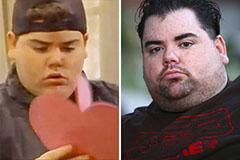Just How to Perform Common Sprinkler Repair Service to Preserve Your Irrigation System
Issues such as reduced water stress, blocked nozzles, and broken heads can significantly impact the system's performance. Cleaning or unclogging nozzles and replacing malfunctioning heads are fundamental jobs that can enhance water circulation. Changing water pressure to the ideal range of 30-50 psi makes sure consistent coverage.
Identifying Common Lawn Sprinkler Issues
A well-kept lawn sprinkler system is critical for efficient yard treatment, yet even the finest systems can run into problems. One frequent issue is reduced water stress, which can cause uneven watering and dry spots on your yard.
One more prevalent issue is lawn sprinkler heads that do not pop up or pull back effectively. This malfunction could be due to particles blocking the device or a damaged springtime. In addition, misaligned lawn sprinkler heads can cause water being splashed onto sidewalks, driveways, or various other unplanned locations, leading to water wastage and insufficient insurance coverage of your lawn.
Cleansing and Unclogging Nozzles
When dealing with common sprinkler problems, resolving blockages is imperative for preserving ideal system efficiency. With time, debris such as dirt, lawn trimmings, and natural resource can build up within the nozzles, blocking water flow and minimizing irrigation performance. To guarantee your lawn sprinklers run successfully, routine cleansing and unclogging of nozzles is vital.
Begin by transforming off the watering system to stop any unintentional water discharge. Very carefully get rid of the nozzle from the sprinkler head. This may call for using a little screwdriver or a specialized nozzle removal tool. Once detached, inspect the nozzle for noticeable debris. Use a fine needle or a tiny cord to displace any kind of blockages within the nozzle's opening. For comprehensive cleansing, saturate the nozzle in a combination of water and vinegar or a business cleansing option created to dissolve mineral deposits.
Wash the nozzle under running water to eliminate any continuing to be particles and reattach it to the sprinkler head. Transform the system back on and observe the water distribution to ensure the clog has been cleared. Routine maintenance of lawn sprinkler nozzles can considerably enhance the long life and performance of your watering system.
Replacing Broken Lawn Sprinkler Heads
Replacing broken sprinkler heads is a crucial action in maintaining a reliable irrigation system. When a lawn sprinkler head becomes damaged, it can cause water wastefulness and uneven insurance coverage, which can detrimentally affect the health of your lawn or garden. The initial step is to recognize the malfunctioning head, normally apparent with uneven water spray patterns or water pooling around the base.
Begin by transforming off the supply of water to stop any kind of unnecessary spillage. Make use of a shovel to carefully dig around the sprinkler head, guaranteeing you do not harm the surrounding piping. As soon as exposed, unscrew the damaged head from the riser, bearing in mind of the make and model to ensure you buy a suitable substitute.
Screw the new sprinkler head onto the riser by hand, ensuring it is tight however not excessively my link limited to stay clear of harming the strings. Turn the water supply back on and evaluate the new head to ensure it is operating appropriately, making changes as needed.
Readjusting Water Pressure and Protection
In order to optimize the efficiency of your irrigation system, changing water stress and protection is essential. Correct water pressure ensures that each lawn sprinkler head operates efficiently, distributing water evenly throughout your lawn or yard.
Next, concentrate on changing lawn sprinkler head insurance coverage to remove dry places and overwatered locations. Begin by activating the system and observing the spray patterns. For rotary heads, adjust the arc and distance setups using a screwdriver to modify the instructions and distance of water flow. For spray heads, use the change screw on the top to make improvements the spray pattern.
Ensure overlapping protection in between adjacent sprinkler heads to prevent missed out on areas. Check for any obstructions such as plants or frameworks that might obstruct water distribution. By adjusting water pressure and make improvements sprinkler head protection, you can preserve a lavish, healthy landscape while saving water resources properly.
Regular Maintenance Advice
Following, look for leaks in the irrigation lines. Tiny leakages can intensify into considerable problems if left unaddressed. Screen the water pressure during procedure; changes can suggest hidden leakages or clogs. Change harmed or worn-out parts promptly to avoid more issues.
Change the system's timer settings according to seasonal water needs. Overwatering or underwatering can hurt your landscape and waste resources. Furthermore, examine the rainfall sensor and guarantee it is working correctly to stop unnecessary content watering throughout rains.
Final Thought
Addressing usual issues such as reduced water pressure, clogged up nozzles, and damaged heads can significantly improve system efficiency. Cleansing nozzles with a fine needle and vinegar, changing faulty heads, and changing water stress to 30-50 psi are vital steps.
 Kel Mitchell Then & Now!
Kel Mitchell Then & Now! Spencer Elden Then & Now!
Spencer Elden Then & Now! Michael Bower Then & Now!
Michael Bower Then & Now! Michael Fishman Then & Now!
Michael Fishman Then & Now! Brooke Shields Then & Now!
Brooke Shields Then & Now!